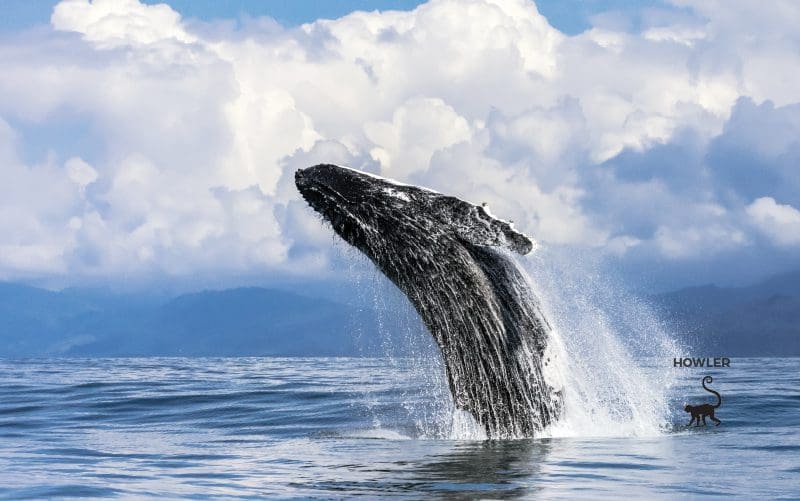
Ten Species Inhabit Costa Rican Waters
A Playground for Whales: Ten Species Inhabit the Waters for Whale Watching in Costa Rica. The Caribbean and Pacific Oceans, embracing Costa Rica on its opposite shores, are both teeming with life. Ten species of whales call these waters their home for at least a portion of each year. In fact, Costa Rica has dedicated Ballenas National Marine Park, south of Dominical, as a preserve for whale breeding and mating.
Although whales inhabit the Pacific Ocean year-round, the best time for viewing them is August through October. Ironically, while the whale population is denser in the Caribbean Ocean, spotting them from Costa Rica’s Caribbean coast is more difficult due to a lengthy, shallow plate extending from the shore.
There is significant diversity in the most common whales that frequent Costa Rican waters. Whale species are divided into two distinct categories: those with teeth (odontocetes) and those with a filtering mechanism for ingesting food, known as baleen whales.
Although whales inhabit the Pacific Ocean
year-round, the best time
for whale watching in Costa Rica is August through October.
Food filterers
Sei whales are the fastest and second largest type of baleen whale. Steely gray in color, they can weigh up to 30,000 kilograms (about 65,000 pounds). Sadly, they are on the endangered list
Another endangered whale in the baleen category is the Bryde’s (pronounced “brude’s”), easily identified by the three distinct ridges on its head. The Bryde’s whale can only survive in water temperatures above 20oC, so its habitats are restricted to warmer climates.
The blue whale is the largest mammal on earth, reaching more than 100 feet in length when fully mature. These whales, a staggering seven meters in length at birth, can be found in every ocean on the planet. Hunted nearly to extinction in the 19th century, the blue whale has since made a steady recovery.
Perhaps the most popular baleen whale is the humpback. Easily identified by their long pectoral fins, which can reach up to 15 feet, humpbacks are also unique for their style of leaping from the water — breaching — as if in a dance. The most social of whales, humpbacks travel in pods and communicate with each other through underwater “songs”.
Whales with teeth
In the odontocetes category, pilot whales have a sharply pointed fluke, or tail fin, and a globe-shaped head. They also travel in pods; in fact, they are rarely spotted solo.
The pygmy sperm whale, as its name suggests, is among the smallest of this type of mammal, with adults rarely exceeding 10 feet long. It has a creamy, pinkish underbelly.
The dwarf sperm whale, even smaller than its pygmy cousin, is usually no longer than eight feet. These whales can emit a reddish-brown ink to distract predators, much the same as squids do.
The beaked whale is recognizable for its lower jaw with jutting teeth, shaped very much like a beak. Its adult length can be up to 15 feet.
Then we have the killer whale, or orca, which will eat pretty much anything that moves. Seals, turtles, squid, seabirds or even other whales are all on the orca’s menu. Weighing up to 10 tons, these mammoths have an erect dorsal fin and a distinct black-on-top and white-on-the-bottom color pattern.
False killer whales are also predators, but being only about two-thirds the size of the orca and dull grey in color makes them much less popular to observe.
Scientifically bred playground
It is no coincidence that the place where the Pacific Ocean embraces Costa Rica has become a playground for whales. The scientific term Costa Rican Thermal Convection describes the upwelling effect of shallow warm waters directly offshore meeting cold, deeper waters to create a “dome effect.”
This unique swelling current directs microscopic food from the bottom of the ocean into an area where whales (and dolphins) can thrive from a virtually unlimited, perfect food supply. The result is that Costa Rican waters have become a favored spot for the world’s largest mammals … and for the humans who observe them with fascination.
